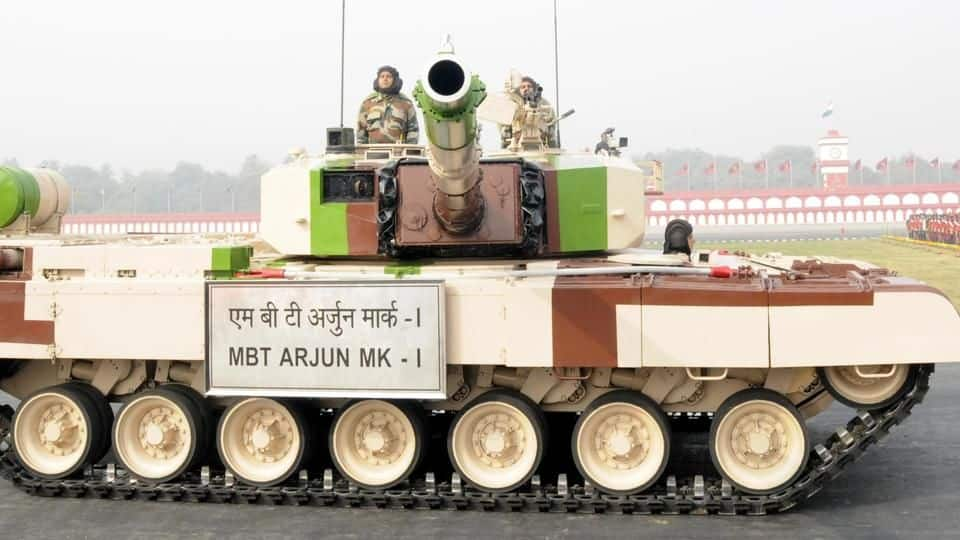
#DefenseDiaries: Why is Indian Army unhappy with the Arjun tank?
What's the story
Last week, the Indian Army issued a preliminary tender to global arms manufacturers for 1,770 future ready combat vehicles (FRCVs) or futuristic tanks. The request for information (RFI) essentially marks the death blow for the indigenously developed Arjun main battle tank (MBT). The Army has only commissioned 124 Arjun Mk.1 tanks. But why is the Army reluctant to back the Arjun tanks? We explain.
History
Arjun tank development plagued by budgetary issues and other delays
In 1974, the Indian government sanctioned the project to develop the Arjun MBT. In the 1980s, the tank's specifications were changed to match the heavy US-made M1 Abrams which was being pitched to the Pakistani Army. India hired German designers (behind the famed Leopard 2 tank) for the Arjun project. The resultant tank weighed 60-tonnes and was plagued by budgetary issues and other delays.
Specifications
Army commissioned 124 Arjun Mk.1 tanks
During the course of the Arjun's long protracted development, the Army commissioned hundreds of Russian T-72 and T-90 tanks. In 2000, the government approved the commissioning of 124 Mk.1 Arjun tanks which entered service from 2004. The tank has a crew of four and features a 120mm gun, a robust indigenously-developed Kanchan armor, and advanced sights. It can fire various kinds of rounds.
Procurement
Army didn't order additional Arjun Mk.1s
A follow-on order for Arjun Mk.1s was planned but never went ahead due to the army's reservations and preference for Russian tanks. Instead, the government approved plans to buy 118 improved Arjun Mk.2 tanks but the Army was unwilling to commission them till they cleared field trials. The Mk.2s featured 73 improvements the Army demanded, but this pushed the tank's weight to 68.6 tons.
Problems
Army felt Arjun Mk.2 was too heavy for operations
The Army considers the Arjun Mk.2 to weigh too much for 'seamless application in semi-developed and developed sectors of the Western Front,' defense publication Live Fist reported. It also can't cross the culverts/bridges of Punjab. What this means is that the Arjun is incapable of being wartime deployed beyond the deserts bordering Pakistan. The Army also feels the Arjun has serviceability issues.
Positive
Expertise gained while developing Arjun tank helped
India received the T-90S as knocked-down kits from Russia for licensed production. These didn't feature the technology transfer for the main gun, base armor, and source codes for the fire control system (FCS). Indigenous variants of these were included. Technology developed in the Arjun program were used to upgrade the older T-72 tanks to the latest T-72 Ajeya standard.
DRDO's defense
DRDO feels greater Army support would help improve Arjun
The Defence Research and Development Organization (DRDO) has asserted that if the Army ordered around 500 Arjuns, further upgrades would be possible, production lines would be stabilized, and economies of scale would be established. This would facilitate the development of an all-new Futuristic Main Battle Tank (FMBT). "The FRCV project, if it takes off, will kill the indigenous FMBT project," a DRDO scientist said.
Future course
What's in store for future of India's tank requirement?
The FRCV tank program would come under the Strategic Partnership policy which would see foreign manufacturers tie-up with domestic India companies under 'Make in India.' The Army's decision to go with the Strategic Partnership approach rather than adopt the FMBT project signals its continued preference for foreign platforms than domestically-developed ones. How beneficial would this be in the long run remains to be seen.